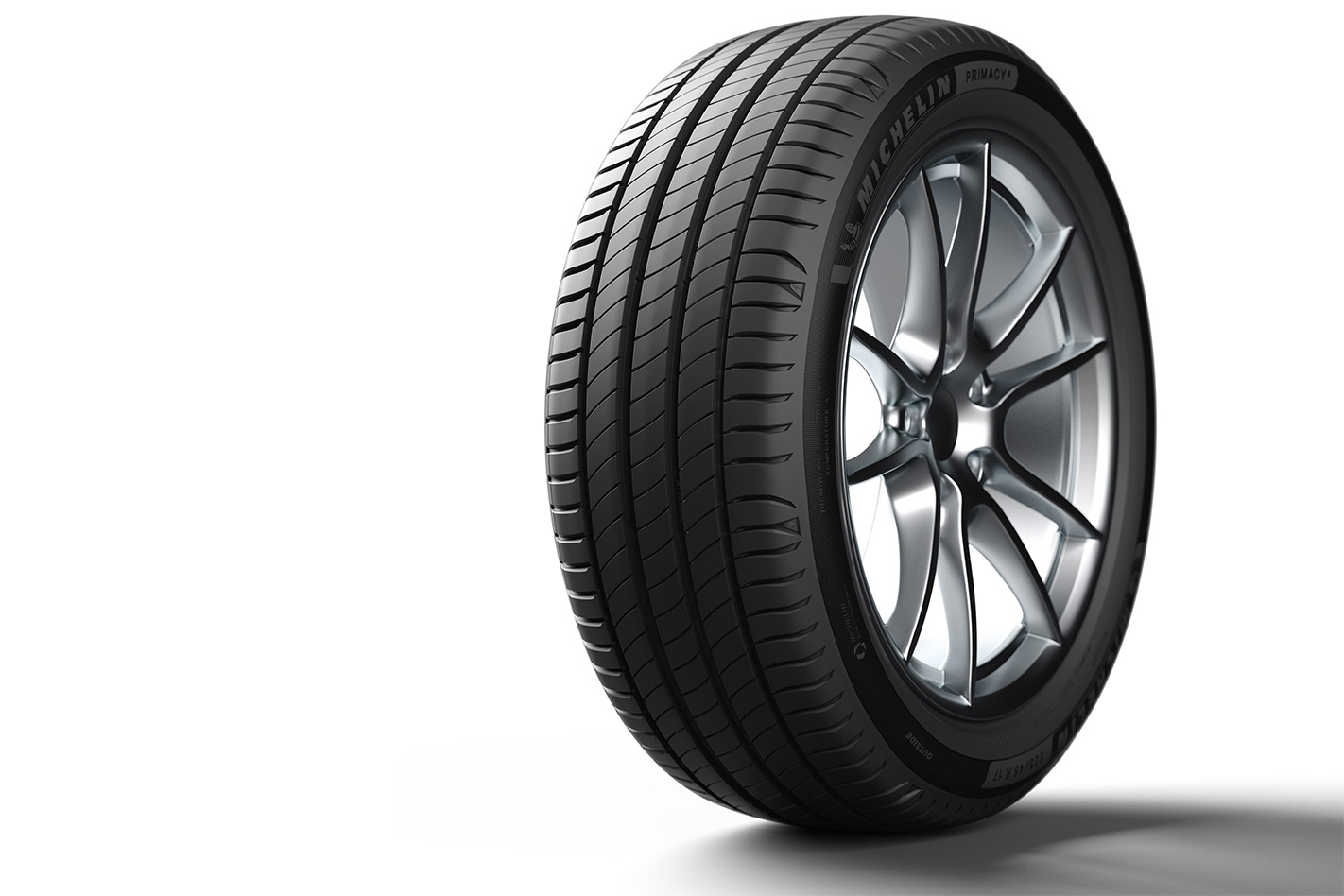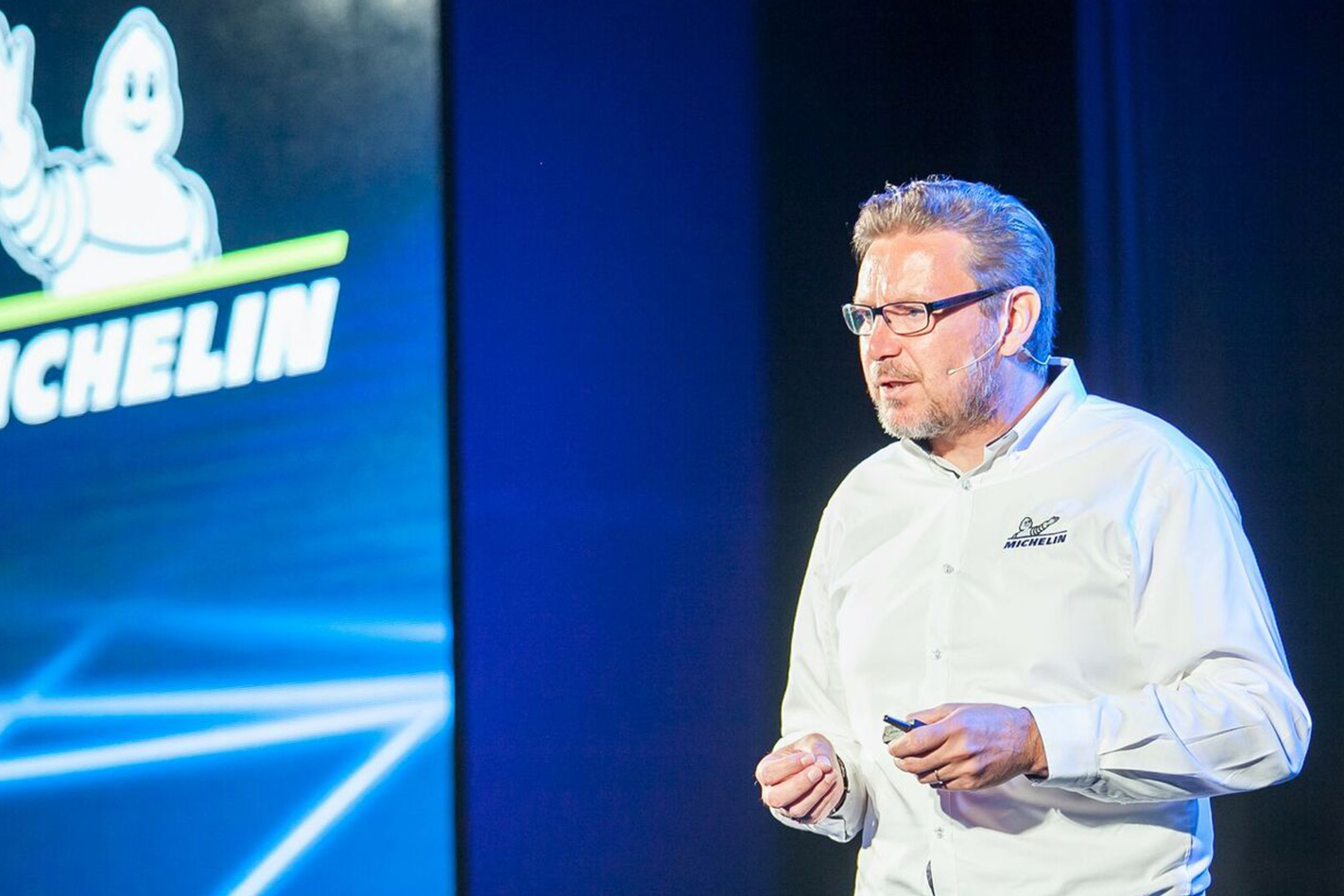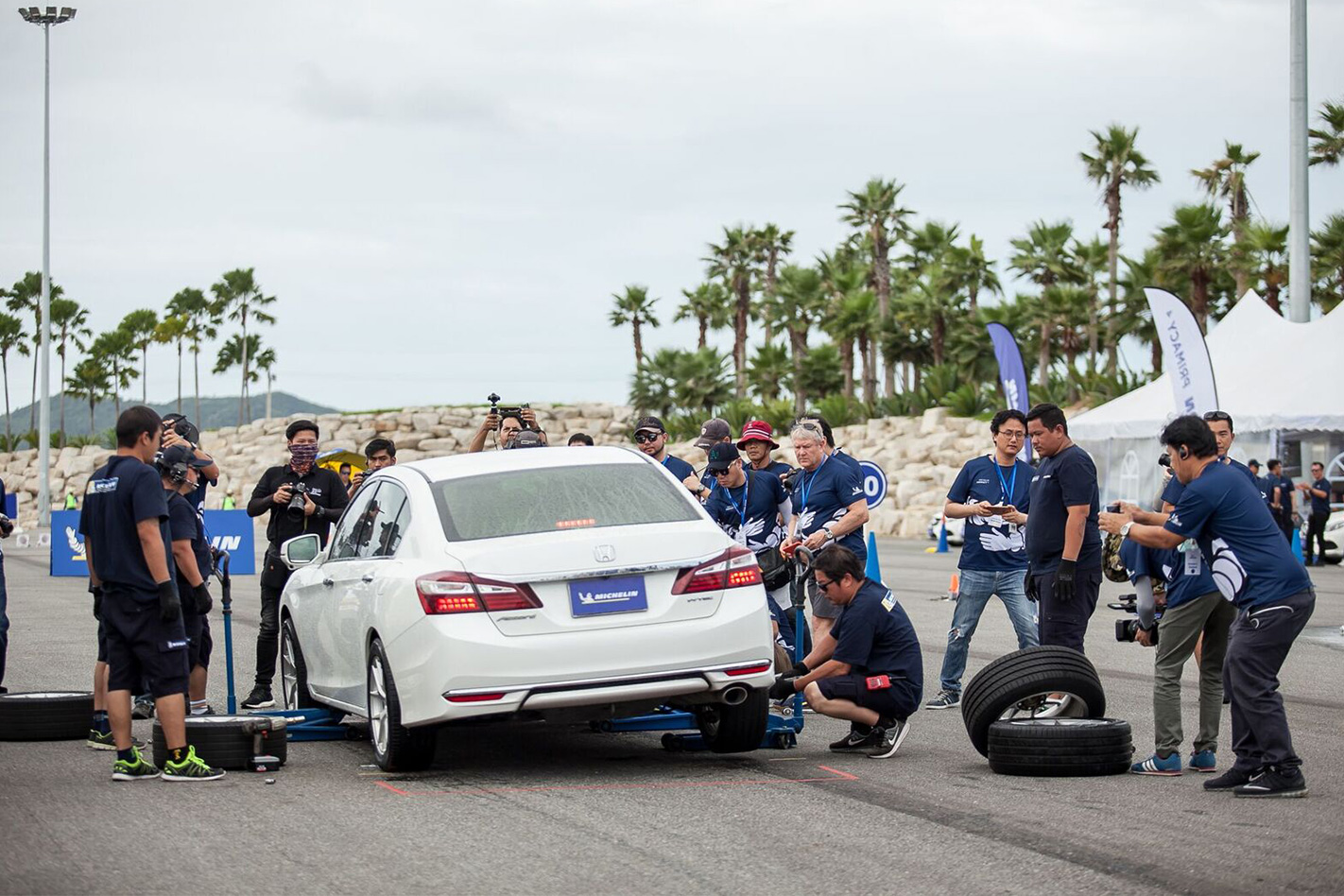
Few people really know about the tyres they fit to their car. Often they’ll go with a like-for-like replacement, or with the most affordable option, but even those who make an effort to choose the safest tyres may not realise their wet-weather grip ratings quickly become redundant once they start to wear.

The world’s second-biggest tyre maker, Michelin, reckons it’s time for tyres to also be rated on how they’ll perform in wet conditions when worn to help drivers better understand how safe they’ll be for the life of the product.
“As soon as you start to drive the tyre performance changes, a little bit at the beginning and then faster,” says Michelin’s worldwide head of science and innovation communication Cyrille Roget. “So how do you know you are safe if tyres are only measured when they are new?”

Roget explained that the good news with older tyres is they grip better in dry conditions, in a similar manner to racing slicks that have little or no tread, and can be up to 20 percent more fuel efficient as they offer less rolling resistance.
“The bad news is, on wet roads, your safety decreases with tyre wear and this is true for all tyres on the market,” he adds. “Your tyres were measured when they were new, but now they’re not as good, so how do you know you are safe?”
After almost 130 years in the tyre business Michelin is ready to ask that question and says it has the answer in the form of its new Primacy 4 tyre, marketed under the slogan ‘safe when new, safe when worn.’

According to Michelin, independent testing of unworn tyres has revealed the Primacy 4 stops on average 2.5m shorter in the wet than 24 rivals including products from Bridgestone, Dunlop, Hankook and Goodyear.
But in worn testing with all tyres buffed to 2.0mm – just shy of the 1.6mm minimum – Primacy 4 averaged a 5.1-metre shorter wet-braking distance. It even stopped up to 1.8 metres shorter in the wet than some unworn rival products, which Roget admits came as a surprise.
The company partly replicated the testing at the Primacy 4’s launch in Thailand in front of motoring press, with emergency-braking from 80km/h on a sodden track demonstrating the worn Primacy 4s outperforming a new similarly-rated big-name rival.
Michelin says it has achieved improved worn grip partly through using more adherent rubber compound made possible through an active bonding process, which it calls ‘Evergrip’. This uses a more effectively aligned tyre compound which allows the addition of more grippy silicon – a process Roget compared to packing a suitcase.
“If you want to put all your clothes in a bunch in the bag you won’t fit too much,” he said. “Now if you put everything in well order and iron them and put them into the bag you will fit much more.
“This is what the active bonding is doing, it’s ordering everything into the compound so you have more space, and if you have more space you can put more silica, (without using more rubber) which is a driver of adherence.”

The Primacy 4 also has a squarer profile than the current Primacy 3, and less tapered tread pattern that widen its footprint and help clear more water even as the tread loses depth.
Roget says another advantage of a testing regime that rates safety for the life of a tyre is that drivers will feel confident in using them until their tread depth reaches the minimum 1.6mm tread-depth, instead of taking a cautious approach based on miles driven. As well as reducing vehicle running costs this would also do wonders for sustainability.
According to Roget, if all tyres were known to be safe at their minimum 1.6mm tread depth, drivers would less likely to swap them too soon, based on miles driven, thus saving 400 million tyres and 35 million tonnes of CO2 globally every year.
But Bridgestone Australia’s technical field service manager Jon Tamblyn is concerned that promoting confidence in worn tyres will lead to further complacency, with independent research showing that just five percent of Aussie motorists check their tyres on a fortnightly basis, while 44 percent go more than two months without giving them a second look.
The research also shows a 26 per cent decrease in motorists replacing tyres because they look worn out over the past five years, which could also be a result of motorists not inspecting their tyres regularly
Tamblyn says despite advances in tyre technology, a newer and less worn tyre will always perform better.
“A vehicle travelling at 80km/h with 3mm of tread remaining on its tyres will stop 9.5 metres later than a new tyre in the wet, while a tyre on the legal limit of 1.5mm of tread will increase its stopping distance gap to 18.6 metres. Or more frighteningly, at the same point a car with new tyres comes to a stop, the tyres with 3mm of tread will still be travelling at 30km/h, and tyres with 1.5mm of tread will be at 40km/h.”
The Primacy 4 will be available in Australia from August 1 and on offer in 35 sizes from 15- to 19-inch diameter to fit a wide range of both mainstream and luxury vehicles.




